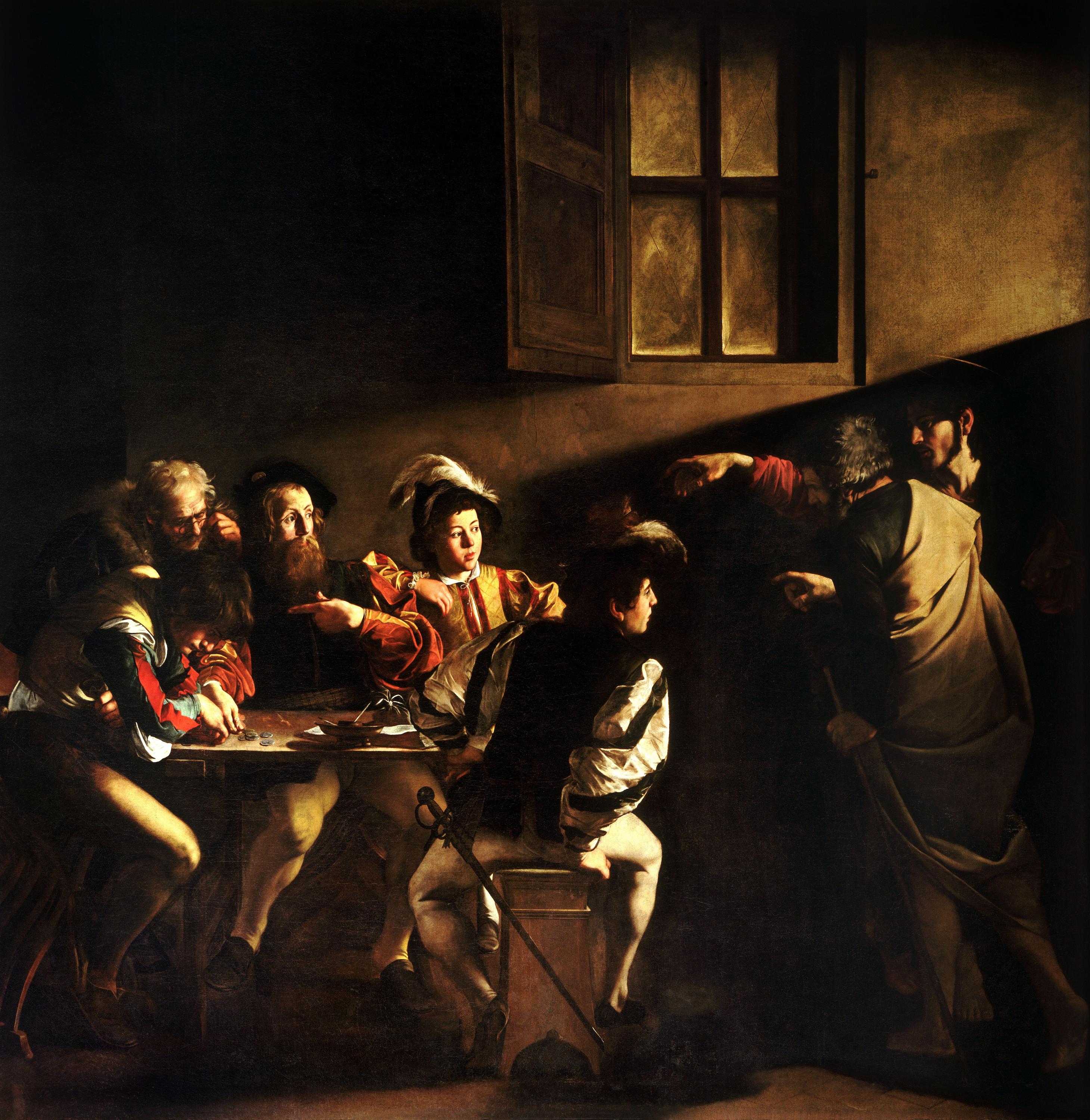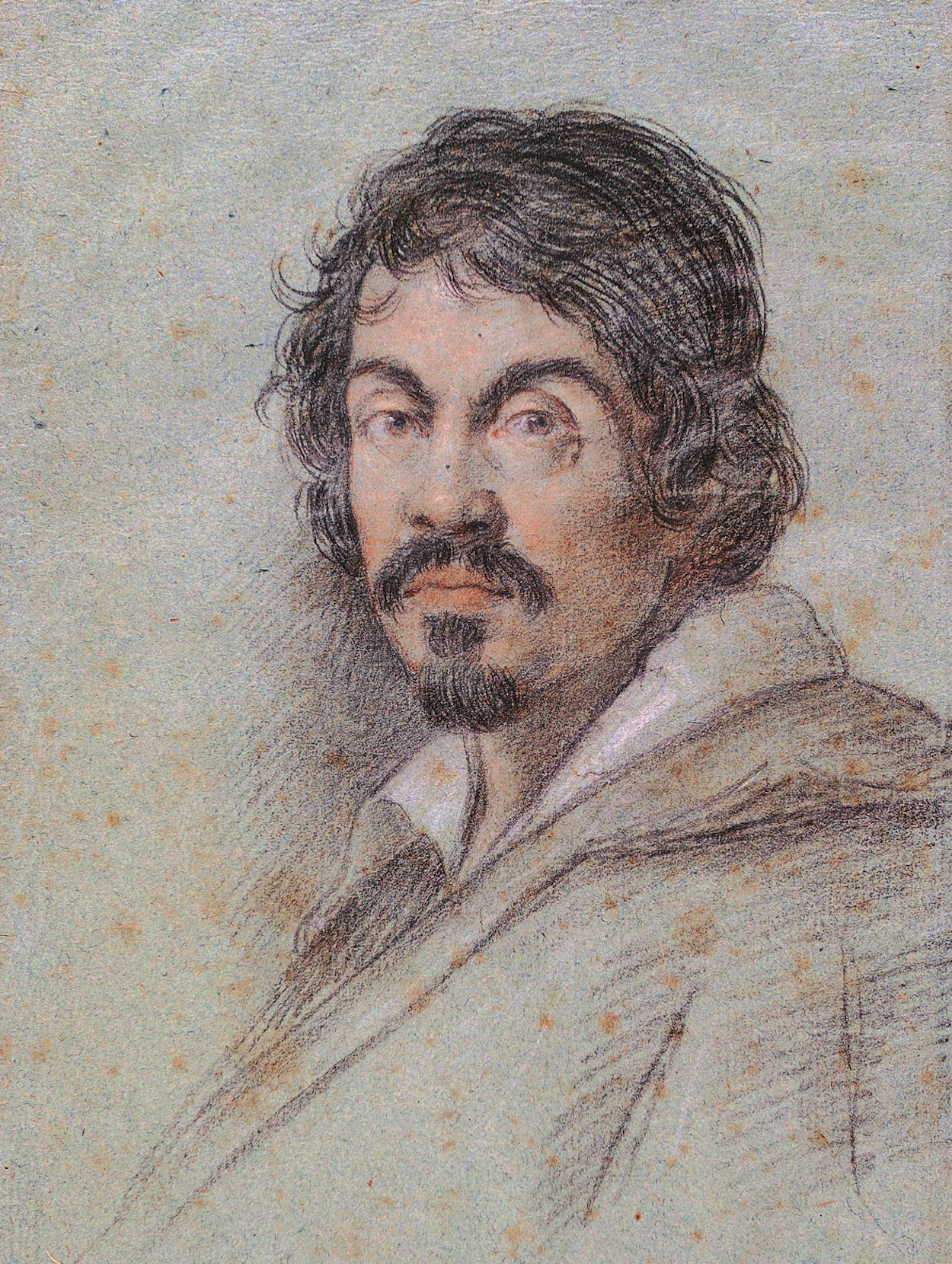This Caravaggio masterpiece depicts the moment when Jesus inspires Matthew to follow him. Caravaggio painted it for the San Luigi dei Francesi Church in Rome, where it remains today, hanging alongside two other Caravaggio paintings of Matthew: The Martyrdom of Saint Matthew and The Inspiration of Saint Matthew. All three were completed between 1599 and 1602 for related commissions, though Caravaggio seems to have worked on them simultaneously.
The painting depicts the story from the Gospel of Matthew 9:9, "And as Jesus passed forth from thence, he saw a man, named Matthew, sitting at the receipt of custom: and he saith unto him, 'Follow me.' And he arose, and followed him." Caravaggio depicts Matthew the tax collector sitting at a table with four other men. Jesus Christ and Saint Peter have entered the room, and Jesus is pointing at Matthew. A beam of light illuminates the faces of the men at the table who are looking at Jesus.
Somewhat surprisingly, there is lively debate over which man at the table is Saint Matthew. The pointing gesture of the bearded man at the table can be read two ways: (a) the bearded man is Matthew asking "Who, me?!" and pointing to himself, or (b) the bearded man is pointing at the young man at the end of the table, hunched over and counting the money as a tax collector might, and the bearded man is asking, "Who, him?!" Either way, the bearded man seems a bit skeptical.
Most scholars go with (a) the bearded guy, and their view is strongly supported by the fact that the St. Matthews in the two other paintings that hang nearby seem to be based on the same "bearded guy" model, though Caravaggio has made him look older in those works. Option (b) is a more recent suggestion, seeing the painting as depicting the moment immediately before a young Matthew raises his head to see Christ. Other indecisive writers have gone with option (c), which is to blame the artist and call the painting "deliberately ambiguous."
The other fascinating image in the painting is Jesus's hand. It is an almost perfect mirror image of Adam's hand reaching toward God, as painted by Michelangelo. Caravaggio's style was a deliberate and decisive shift from Michelangelo's idealism where everyone always looks perfect. Instead, Caravaggio depicted what he saw and how he saw it. Moreover, his chiaroscuro was so strong and powerful that it got its own name: tenebrism. You can see his influence everywhere in modern cinema because directors know the power that kind of contrasting image has on an audience. It is this combination of intellectual force and artistic prowess that have made Caravaggio's works so popular for over 400 years.
- Clinton Pittman
P.S. How did Caravaggio die? The answer is not easy ... check it here.


 Caravaggio
Caravaggio